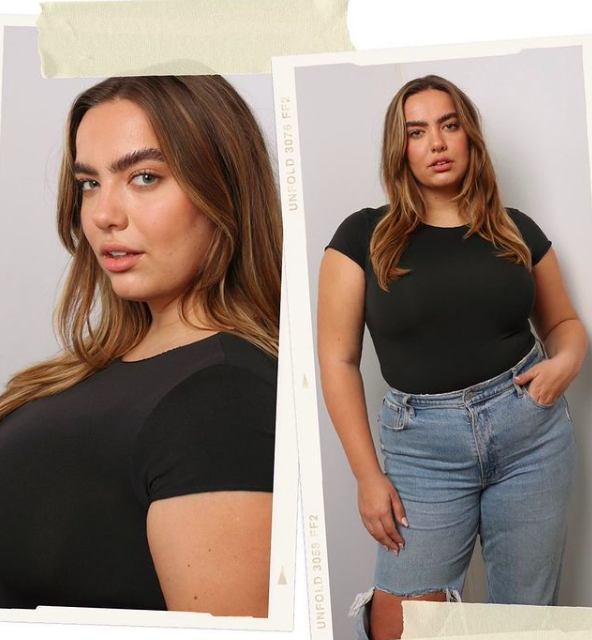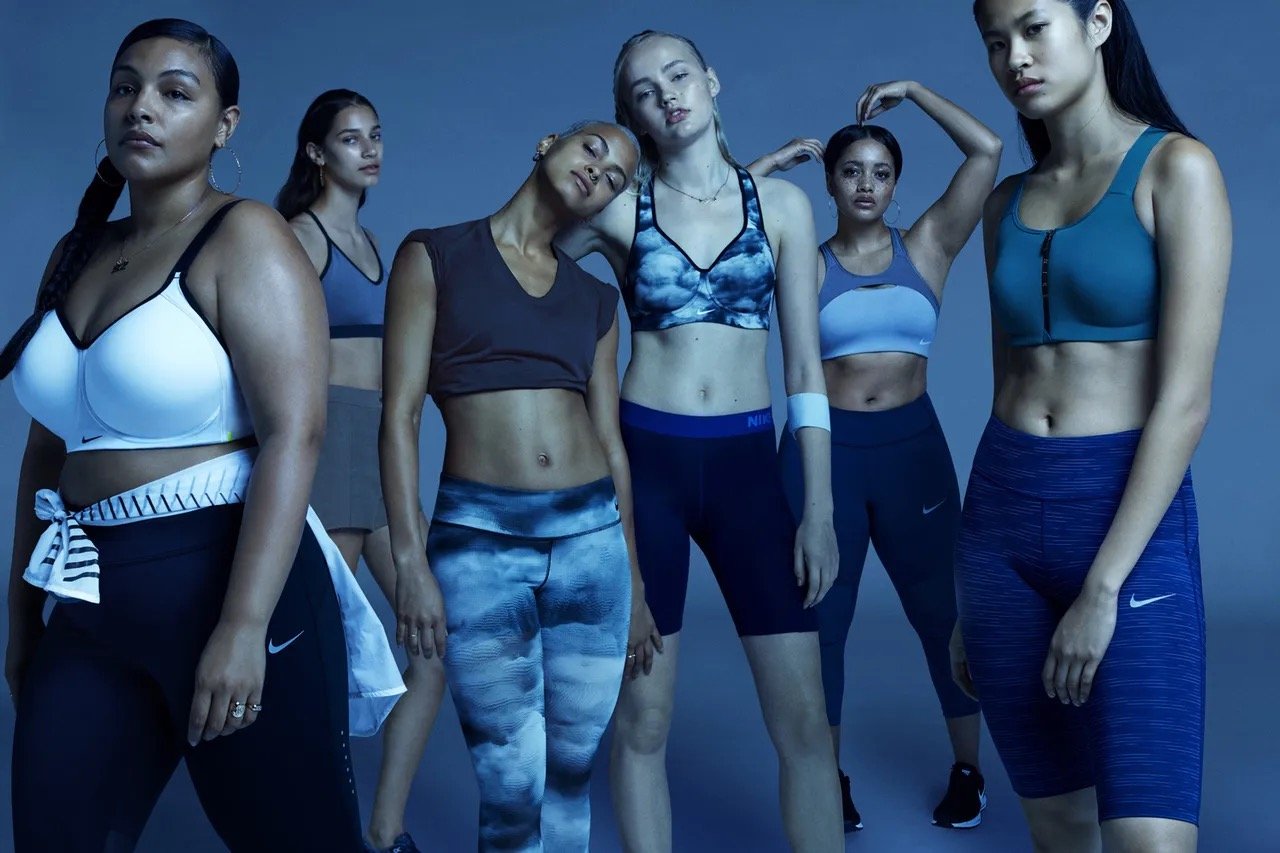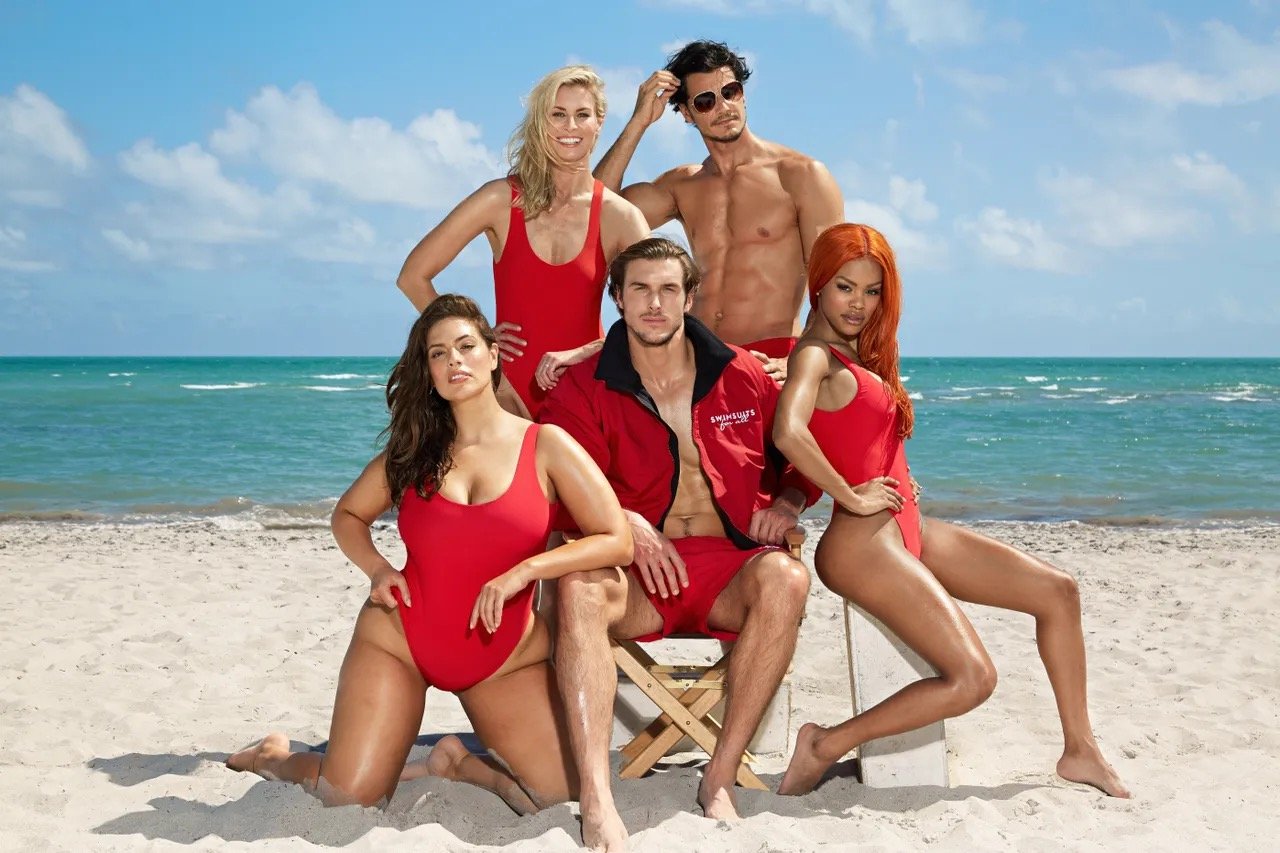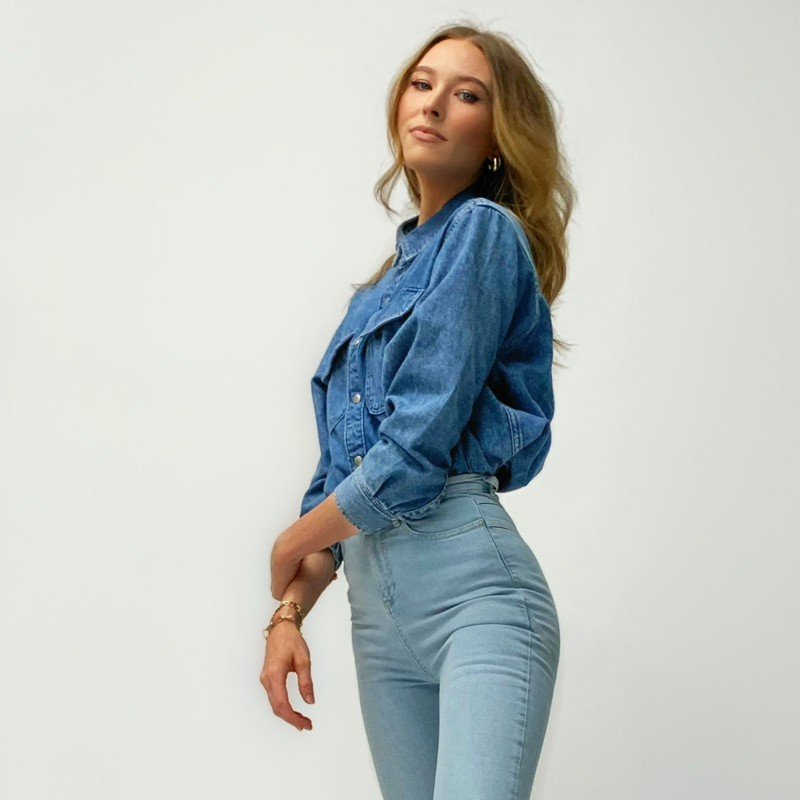“Model Body”: The Road to Inclusivity in The Modeling Industry
A behind the scenes look at life as a curve model in the fashion industry.
When you think of a model, what image appears in your mind? Is it a tall, size 0 woman with high cheekbones and perfect skin? The cliché stereotype is as old as capitalism itself and has been the source of unhealthy relationships with body image for generations.
Source: Insider
The era of authentic beauty has tried its best to combat this narrative, prompting brands to incorporate curve models into major campaigns alongside the typically cast thin models. Working as a curve model myself for four years, I know firsthand the industry has come a long way in terms of representation and inclusivity, prioritizing diversity in many campaigns. The question remains, are these changes enough for everyone to feel represented? Or is there still work to be done to eliminate the unhealthy beauty standards mentioned earlier? If so, how is it happening?
Since working in the industry, I’ve had my fair share of haters and disrespectful comments. There has been more than one experience where I have had to explain to someone that even though I’m not a size 0, I can still make a living as a model.
I remember a specific instance when I was checking into a hotel for a job that I booked out of state. The receptionist asked me about my stay because the client had booked my hotel, and when I said I was going to be their model the next morning, he looked me up and down and said “oh, well you have a very pretty face.” I know he was trying to be kind, but it still stung a little.
Source: @julia.beret on Instagram
I sat down with Julia Beret, a 24-year-old curve model and influencer with 171k followers on Instagram, to see if her experiences match my own. I was curious to know if Julia had encountered anything similar to my hotel experience. She confirmed and went on to say that “it kind of depends on the situation. If I know they're not going to be weird or rude, I'll say I'm a model, and then if they ask, ‘oh who do you work for?’ I can explain further.”
“Some people can be really disrespectful about it, saying, ‘oh, but you’re fat’...Yes. But I’m also a model. So, I introduce myself mostly as a plus size model to avoid that negativity.”
Source: @maxeygreene on Instagram
There is controversy in the modeling community about the title of models above a size 6. This is because, technically, the industry labels models that are this size as plus-size or curve. The issue with this terminology is that not every plus-size woman has hourglass curves and identifies as curvy. Contrastingly, not every curvy woman identifies as plus-size. After all, the average size woman in America wears a size 16-18.
Julia explains, “My modeling agency has three boards, they have straight size, curve, and plus. I'm on the curve board, which is kind of the 12-14 size range, so I don't have a problem with my title, but also, I am a curvy person, so that definition fits for me.”
Not everyone feels this way though. Maxey Green, one of Lane Bryant’s signature models, has spoken publicly about this, saying, “don't call me a curve model. I'm not a curvy person. I'm a plus-sized person.” It typically depends on who the person is and what they are comfortable with, but the goal is for the public to accept the umbrella term “model” for all sized models, not just the size 0 ones because, at the end of the day, curve models are doing the exact same job.
I have noticed that often when brands incorporate diversity in their campaigns, there is typically one curve model for every three straight-size models, which is the industry term for models that aren't considered “plus-size.”
Julia has noticed this as well, stating, “very rarely am I not the only curve girl on set, and typically, I have less to shoot that day because of it. It feels like my shots don't always matter as much as the straight size girl’s shots, like they're an afterthought. Not always though, sometimes you feel just as valued and equally as important, it really depends on the client.”
Image sources: Glamour & Allure
While grateful for the opportunity to be featured in campaigns alongside straight-size models, it can sometimes feel like there is only room for one “diversity hire” and often that person is expected to represent the entire plus-size market. This is ironic seeing as it is the largest market in America—no pun intended. That, or the campaign is exclusively plus size women. It is extremely important for all consumers to be able to relate to the models they see in campaigns, not just one size.
“There needs to be more than one plus-sized person on set. It shouldn't just be as a size 14 representing all plus-size people, because that is full dress size smaller than the average size woman in America,” Julia explains. "It would be wrong for me to be representing size 22 women because I'm six sizes away from that. Ideally, the client would book a size 8, size 14, and size 22 model, and not just represent the complete opposite ends of the spectrum, because they’d be missing a portion of the market.”
Source: LinkedIn
To explore the suspicion of brands typically hiring one size of curve model, I turned to an industry professional, Josefine Svensson for her insight. She has been a model scout at State Management for four years and was working as a model for eight years prior to that.
She explains, “for clients who hire curve models, their sweet spot is definitely a size 14 or 16. That doesn't mean that someone who is a size 20 or 24, won't get booked, just maybe not as often as someone who is a size 14-ish...the industry is looking so different today if you compare it to 10 years ago when I was modeling, it was all about the size 0. You had to be super tall, super skinny, and it was a whitewashed runway. But today, because of the Black Lives Matter and inclusivity movements, anyone can be a model.”
This is a great example of the modeling industry moving faster with social change than the fashion industry. While anyone could be signed as a model, it doesn’t guarantee they’ll be booked.
Josefine’s colleague, Maddy Schulcz, is a fit model manager who has been working in the industry for three years and agrees that it is changing for the better.
She explains that “diversity is everything and there has definitely been a big push towards curve models. When I worked at my old agency we had a curve board, but it was small, and now, their curve division is probably bigger than their straight-size division. And it's not just clients looking for curve models, but they're also looking for LGBTQ models, trans models, and Victoria's Secret has been begging us for models in wheelchairs lately.”
Source: LinkedIn
Source: Medium
Curve models being included in high fashion campaigns is a major step in the direction of inclusive representation. Josephine was excited to tell me that “today [State Management] has curve models on the imageboard which is exclusively for models that do high fashion stuff like Gucci shows and Louis Vuitton photoshoots.”
These high fashion jobs, however, don’t pay as well. She explains this is because they are typically used for exposure. Once a model books a high-end client, they are no longer submitted to more consistent jobs like Macy’s or Target because they need to maintain a high-status image. This makes it extremely difficult to make a living from these high-end jobs as a curve model who already gets fewer opportunities than a straight-size model.
Image Source: Modelscouts.com
Working as a curve model through the pandemic, most of my jobs shifted from print work to fit jobs. These jobs are crucial to the fashion industry because they give brands the opportunity to fit their samples on models who have the specific measurements needed for that size, and then receive feedback on how it fits.
Although these jobs don’t have the model taking photos for marketing or exposure, Josephine mentions that fit models typically make the most money in the industry because these jobs are very consistent. As a fit model manager, Maddy is an expert in that side of the industry.
She explains that “A lot of brands still don't fit plus size, especially contemporary brands, one of our newer clients is very high end and they don't have any plus sizes yet. Versus Tanya Taylor, for example, who is also higher end, but they do have plus sizes, so I think [the industry] is getting there.”
The fit of clothing is so incredibly important. I remember believing that if something didn’t fit, it was my fault but now, having been behind the scenes of production, I know it’s the brand’s responsibility to make properly fitting clothing for all sizes.
Julia had a similar experience growing up, stating that modeling has increased her self-image. She explains, "I would go into Target and try on clothes and cry. I was like, I'm wearing the size Large this is horrible! This is a fate worse than death! And now I'm like, oh, in this brand, I need the size 16 because it fits differently, I know now that clothes are meant to fit me. I'm not meant to fit the clothes, and that's definitely changed because of modeling.”
Source: TheDailyTexan
This size fluctuation between brands is a common occurrence, but why? Maddy explains that with her fit clients, she often must ask for the measurements that the brand is looking for rather than the dress size for the model because “some companies like to do vanity sizing, where the specs are actually for a bigger size, but they’ll label it a size smaller. So, they’ll label it a size six but the model who fits the clothing is a size eight, and they know she's a size eight, but when consumers are shopping it makes them feel better about themselves because they're like, ‘oh my god, I'm a size six in this brand!’ when that’s not actually the case.”
This phenomenon has been going on for so long that a women’s size 12 in 1958 is now a size 6. Vanity sizing may make it easier for brands to sell more, but it makes it almost impossible to shop online and can increase body image issues for women who shop between multiple brands.
Body image issues affect more women than the fashion industry makes it appear. A survey that polled 300 American women confirmed that ninety-seven percent of women say they have at least one negative thought about their body image every single day. Even Julia, a gorgeous working curve model, remembers always wanting to work in the fashion industry but didn't think that being a model was possible because she wasn’t a size 0.
“Getting to prove the younger me wrong is really cool...And yeah, while there are issues in the industry that systemically need to be fixed, it’s the coolest job in the world and I wouldn't trade it for anything,” she mentions.
Sources: People & Sophia Cosette, Getty Images
The issues that were brought up most often in these interviews are mainly the cause of societal standards that have been created by the capitalistic nature of the fashion industry. In an ideal world, marketers would use inclusion and authenticity for sales rather than taunting consumers with unrealistic beauty standards that make them feel like the only way to achieve that beauty is to buy the product.
It was clear to me as we discussed our experiences, that the modeling industry is actively trying to change this cliché beauty standard that was set long ago, and the fashion industry is doing its best to catch up. While one needs to have thick skin to work in the fashion industry, especially as a curve model, for me, it has been a life-changing experience.
I have more self-confidence, I understand my body better, and it is the most rewarding feeling knowing that each campaign I book is one step closer to changing beauty standards for women everywhere.












